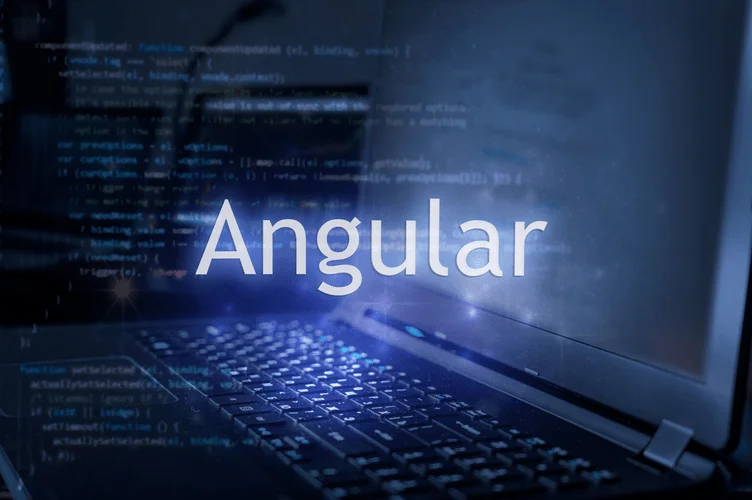Threat Assessment And Evaluation Methods: Qualitative And Quantitative
27.04.2023This helps project managers and team leaders to make choices with reduced uncertainty and supports the process of controlling dangers. Value at risk (VaR) is a statistic that measures and quantifies the extent of monetary risk inside a firm, portfolio, or position over a specific time frame. This metric is most commonly used by investment and commercial banks to determine the extent and prevalence ratio of potential losses of their institutional portfolios.
By comparability, qualitative threat management is extra subjective but also in widespread use. It uses descriptive classes (such as high, medium, low) as an alternative of numerical values to assess the probability and impression of risks. It’s often based on expert opinion, expertise, and judgment somewhat than numerical data.
On the opposite hand, a poorly designed or applied framework can result in increased threat ranges and potential unfavorable penalties for the organization. Risk evaluation is the process that determines how doubtless it is that threat will arise in a project. It studies the uncertainty of potential risks and how they would impact the project when it comes to schedule, high quality and costs if, in reality, they have been to show up. But it’s necessary to know that threat analysis just isn’t an actual science, so it’s important to track dangers throughout the project life cycle. A decision tree evaluation consists of mapping out the potential outcomes which may occur after a decision is made.

Additionally, technology has made it simpler for organizations to speak and collaborate with stakeholders concerned in risk management. Cloud-based platforms and cell functions permit for real-time sharing of knowledge and updates, making it simpler for groups to work collectively and make informed selections. It is an ongoing process that requires continuous monitoring and analysis. Risks can change over time, and new dangers can emerge, so it’s crucial to remain vigilant and adapt your danger management strategies accordingly.
Risk analysis additionally helps quantify risk, as management might not know the financial impression of something taking place. In some cases, the information could help companies keep away from unprofitable projects. In different circumstances, the information could assist put plans in motion that scale back the likelihood of one thing happen that might have caused monetary stress on a company. With the model run and the information available to be reviewed, it is time to analyze the results.
What’s Cyber Risk?
Look at the capabilities of your group — how useful resource strapped are you, for example — in addition to your budgetary constraints. Take into consideration the variety of dangers you have and their severity. Know what your threat threshold is, which dangers could be accepted, and which cannot. Once you’re conversant in your dangers, choose a strategy and get stakeholder buy-in so everyone is on the identical web page.
Then, divide this result by the standard deviation of the funding’s excess return. According to CROs, banks within the current setting are particularly uncovered to accelerating market dynamics, climate change, and cybercrime. Sixty-seven percent of CROs surveyed cited the pandemic as having vital influence on employees and in the area of nonfinancial threat. Done correctly, state of affairs planning prompts business https://www.globalcloudteam.com/glossary/risk-level/ leaders to transform summary hypotheses about uncertainties into narratives about realistic visions of the future. Good situation planning can help choice makers expertise new realities in methods which might be intellectual and sensory, as nicely as rational and emotional. Scenarios have four main features that may help organizations navigate unsure times.
- On the opposite hand, quantitative risk analysis is elective and goal and has extra detail, contingency reserves and go/no-go selections, nevertheless it takes extra time and is more complex.
- In instances like this, it’s quite straightforward for risks to be mislabeled, and as such, some mitigation strategies might fall to the wayside.
- For extra on the means to assess and prepare for the inevitability of threat, learn on.
- Classifying dangers on this manner makes it simple to see which dangers have to be addressed instantly and which of them may be delayed to a later date (if at all).
- Extreme or Critical dangers have both a excessive probability of occurrence and a extreme potential influence on the organization’s business actions.
Examples of qualitative danger tools embody SWOT evaluation, trigger and effect diagrams, decision matrix, game theory, and so forth. A firm that wants to measure the impact of a safety breach on its servers may use a qualitative danger method to help prepare it for any lost income which will occur from a data breach. Under quantitative risk analysis, a risk mannequin is constructed utilizing simulation or deterministic statistics to assign numerical values to threat. Inputs that are mostly assumptions and random variables are fed right into a risk model.
Why Does Threat Prioritization Matter?
That’s why one strategy for prioritizing risks is organizing them by value. The costliest dangers may be prioritized first because of their potential excessive impression to the enterprise. Intolerable risk is a threat that has a high probability of incidence and an influence that might critically affect the business. It may affect prices, schedule, and performance of the business, inflicting significant hurt. Ideally, prioritization is about primarily based on the board’s documented risk tolerance. This high-level course then units the tone for priorities at lower ranges.

She is keen about keeping up with the most recent and greatest cybersecurity information. In her spare time, you will find Courtney reading and writing about psychological well being, music, and artwork. Mutual fund traders are often recommended to keep away from actively managed funds with high R-squared ratios that are typically criticized by analysts as being “closet” index funds. If a safety’s beta is equal to one, the security has exactly the same volatility profile as the broad market. A security with a beta larger than one means it’s more unstable than the market. A security with a beta less than one means it’s less volatile than the market.
Environmental Aspects And Impacts
Used as an extension to the VaR, the CVaR assesses the chance, with a certain diploma of confidence, that there shall be a break in the VaR. It seeks to assess what occurs to funding past its most loss threshold. This measurement is extra sensitive to events that occur at the tail end of a distribution. Beta measures the quantity of systematic threat an individual safety or sector has relative to the complete inventory market. The market is all the time the beta benchmark an investment is compared to, and the market at all times has a beta of 1.
Risk evaluation is a process with multiple steps that intends to determine and analyze all the potential risks and points which are detrimental to the business or enterprise. Finally, effective risk administration also can have a positive impact on an organization’s reputation and model picture. By demonstrating a commitment to managing risks, organizations can construct belief with their stakeholders, including prospects, traders, and staff. This can lead to increased loyalty, improved financial performance, and a aggressive advantage in the marketplace. The likelihood of occurrence of those dangers is low, and the potential impact on enterprise actions can also be low. These dangers must be monitored, however don’t usually require a significant amount of attention or assets to handle.

Additionally, often reviewing and updating danger management plans can help organizations keep ready for potential dangers and reduce their impact on enterprise actions. On the opposite hand, quantitative danger analysis is elective and objective and has more detail, contingency reserves and go/no-go decisions, however it takes more time and is more complex. Quantitative knowledge are difficult to gather, and quality knowledge are prohibitively costly. Although the effect of mathematical operations on quantitative data are reliable, the accuracy of the information just isn’t guaranteed on account of being numerical only. Data which might be difficult to collect or whose accuracy is suspect can lead to inaccurate results in phrases of worth. In that case, enterprise models can not provide profitable protection or could make false-risk treatment choices and waste resources with out specifying actions to reduce back or remove risk.
Tips On How To Perform Risk Assessment In 5 Steps
To assist, we’ve prepared some free risk analysis templates that will help you via the chance evaluation process. There are many project dangers that may affect your project and, as a project manager, you’re liable for the risk analysis process. Risk analysis, or threat evaluation is crucial as a outcome of it permits project managers to categorise project dangers and determine which ones should be tracked closely. Risk matrices aren’t restricted to one specific trade, field, or profession. In truth, they’re typically personalized in order to meet the user’s exact needs.

For instance, a risk that would have a negligible impression on the project’s success and is considered “improbable” or unlikely to occur would have a risk impact score of 1 (1 x 1). Any threat that might have a reasonable impression and would possibly happen “occasionally” ends in an impact ranking of 9 (3 x 3). On the highest finish of the scale, a danger that would have a “catastrophic” impact on the project and happens “frequently” ends up with a risk impact score of 25 (5 x 5).
Understanding the impression a danger has on your organization could make a significant difference to the order you remediate your risks. High impact risks should typically be tackled first, but there may be resource constraints that prevent this from happening. That’s why deciding on a strategy is so important — you can prioritize based mostly on the distinctive needs of your group. The two drawbacks of qualitative threat administration are a perceived lack of precision and potential for bias. Since it’s largely based mostly on subjective judgment, it can be influenced by private bias, and completely different individuals might rate the identical risk in one other way. Identification happens at multiple levels of the group — from board and administration ranges all the finest way all the means down to project ranges.
Typically, a danger uncertainty twister chart is used to assist prioritize risks. When considering a inventory, bond, or mutual fund funding, volatility danger and risk administration are extra items to judge when considering the quality of an investment. In late 2021, McKinsey performed survey-based research with greater than 30 chief danger officers (CROs), asking in regards to the current banking setting, risk management practices, and priorities for the longer term. How can corporations develop a systematic way of deciding which dangers to simply accept and which to avoid?
While danger assessment matrices tend to be extremely accessible and simple, some users might have some remaining questions surrounding their utilization or application. Other potential solutions might embrace shopping for insurance, divesting from a product, restricting trade in certain geographical areas, or sharing operational threat with a companion firm. The important piece to remember right here is administration’s ability to prioritize avoiding potentially devastating outcomes. For example, if the corporate above solely yielded $40 million of sales annually, a single defect product that might ruin brand image and customer belief could put the corporate out of business. Even though this example led to a risk worth of only $1 million, the corporate might select to prioritize addressing this because of the greater stakes nature of the risk.
Investors favor to put money into corporations which have a history of excellent risk management. No matter what industry you’re in, you’ll at all times have projects and so, you should use project management software program for threat evaluation. ProjectManager, for instance, has danger administration instruments that let you monitor dangers in actual time. Keep observe of individual risk events and mark their impact, likelihood and overall threat level with a danger matrix. Then assign that danger to a staff member and use project dashboards to watch.
Grow your business, transform and implement technologies based on artificial intelligence. https://www.globalcloudteam.com/ has a staff of experienced AI engineers.

